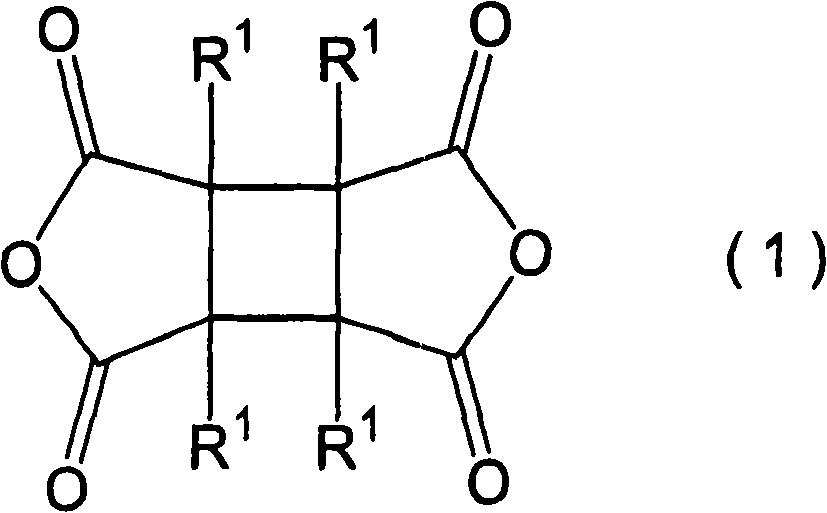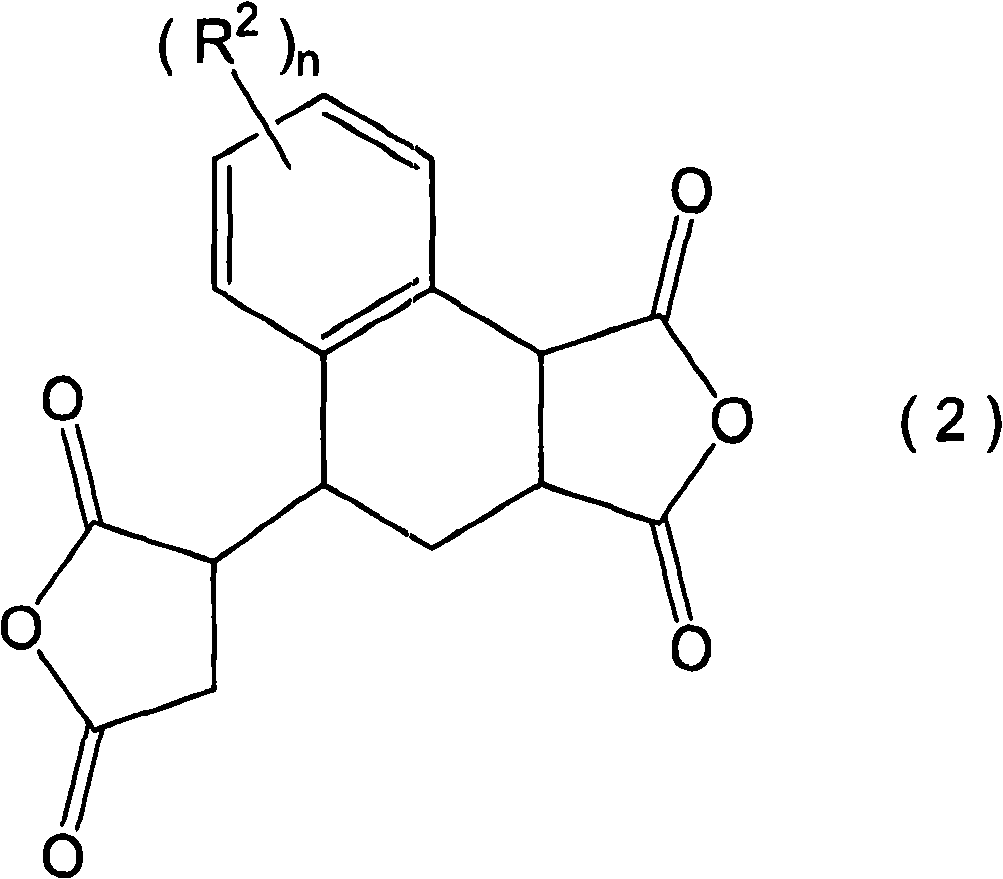Liquid crystal alignment agent and liquid crystal display unit
A liquid crystal alignment agent and solvent technology, which is applied in liquid crystal materials, chemical instruments and methods, optics, etc., can solve problems such as lack of electrical properties of liquid crystal alignment film, difficulty in ensuring the uniformity of liquid crystal alignment agent printing, etc.
- Summary
- Abstract
- Description
- Claims
- Application Information
AI Technical Summary
Problems solved by technology
Method used
Image
Examples
Embodiment
[0125] Hereinafter, although an Example demonstrates this invention more concretely, this invention is not limited to these Examples.
Synthetic example 1
[0127] In N-methyl-2-pyrrolidone, 10 mmol of the compound represented by the above formula (11) as a diamine compound, 70 mmol of p-phenylenediamine and 20 mmol of 4,4'-diaminodiphenylmethane and tetracarboxylic 100mmol of acid dianhydride 2,3,5-tricarboxycyclopentylacetic acid dianhydride, the total amount of tetracarboxylic dianhydride and diamine compound is 20% by weight relative to the total solution of the solution, at 60 ° C The reaction was carried out for 4 hours to obtain a solution containing polyamic acid.
[0128] To this polyamic acid-containing solution, pyridine and acetic anhydride were added in an amount twice the mole of the total amount (theoretical value) of the amic acid structure contained in the polyamic acid, and then heated to 110° C. for 4 hours for dehydration. closed loop reaction.
[0129] The obtained solution was added to a large excess of diethyl ether to obtain a precipitate, which was recovered and dried under reduced pressure to obtain a po...
Synthetic example 2
[0131] 110g (0.50 mol) of tetracarboxylic dianhydride as 2,3,5-tricarboxycyclopentyl acetic dianhydride and 38g (0.35 mol) of p-phenylenediamine as diamine, 20g (0.1 mol) of 4,4 '-Diaminodiphenylmethane and 26g (0.05 moles) of 3-(3,5-diaminobenzoyl)cholestane were dissolved in 800g of N-methyl-2-pyrrolidone at 60°C for 6 hours reaction to obtain a solution containing polyamic acid. A small amount of the obtained polyamic acid solution was taken out, N-methyl-2-pyrrolidone was added to prepare a solution having a polyamic acid concentration of 10% by weight, and the solution viscosity was measured to be 60 mPa·s.
[0132] Next, 1800 g of N-methyl-2-pyrrolidone was added to the obtained polyamic acid solution, 80 g of pyridine and 100 g of acetic anhydride were added, and a dehydration ring-closure reaction was performed at 110° C. for 4 hours. After the dehydration ring-closure reaction, the solvent in the system is replaced with new γ-butyrolactone (by this solvent replacemen...
PUM
| Property | Measurement | Unit |
|---|---|---|
| boiling point | aaaaa | aaaaa |
| surface tension | aaaaa | aaaaa |
| viscosity | aaaaa | aaaaa |
Abstract
Description
Claims
Application Information
 Login to View More
Login to View More - R&D
- Intellectual Property
- Life Sciences
- Materials
- Tech Scout
- Unparalleled Data Quality
- Higher Quality Content
- 60% Fewer Hallucinations
Browse by: Latest US Patents, China's latest patents, Technical Efficacy Thesaurus, Application Domain, Technology Topic, Popular Technical Reports.
© 2025 PatSnap. All rights reserved.Legal|Privacy policy|Modern Slavery Act Transparency Statement|Sitemap|About US| Contact US: help@patsnap.com



